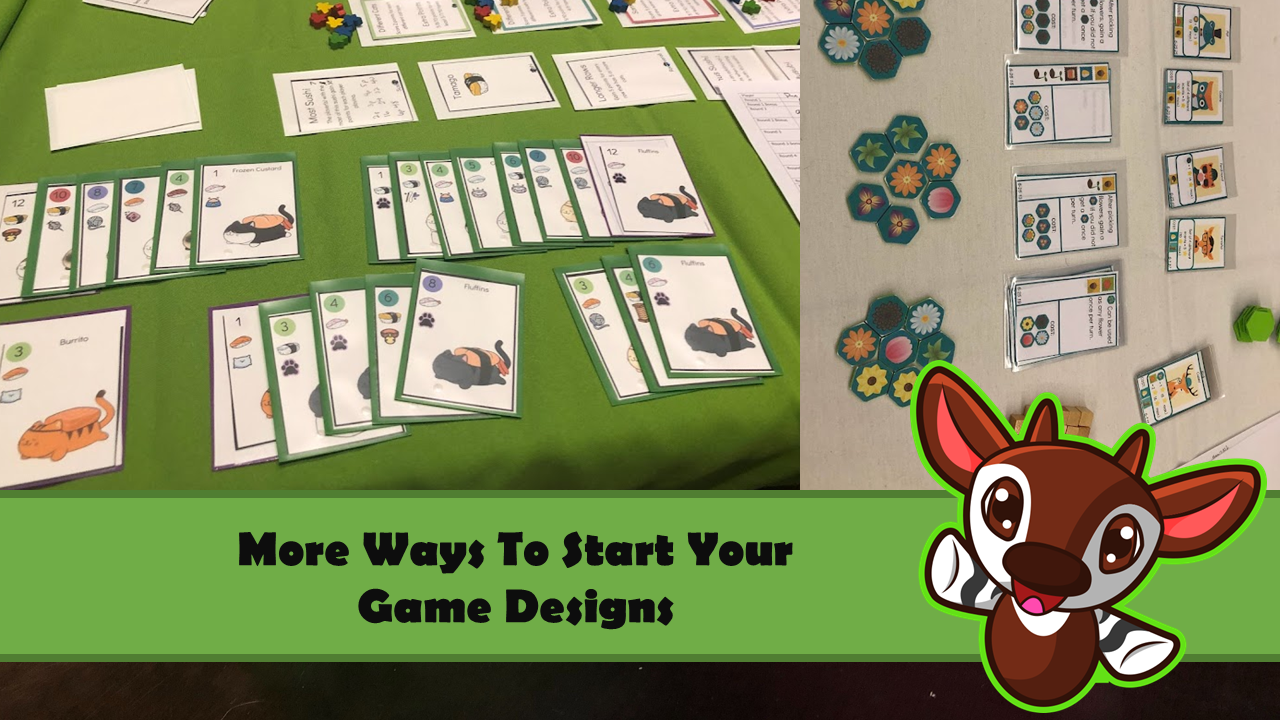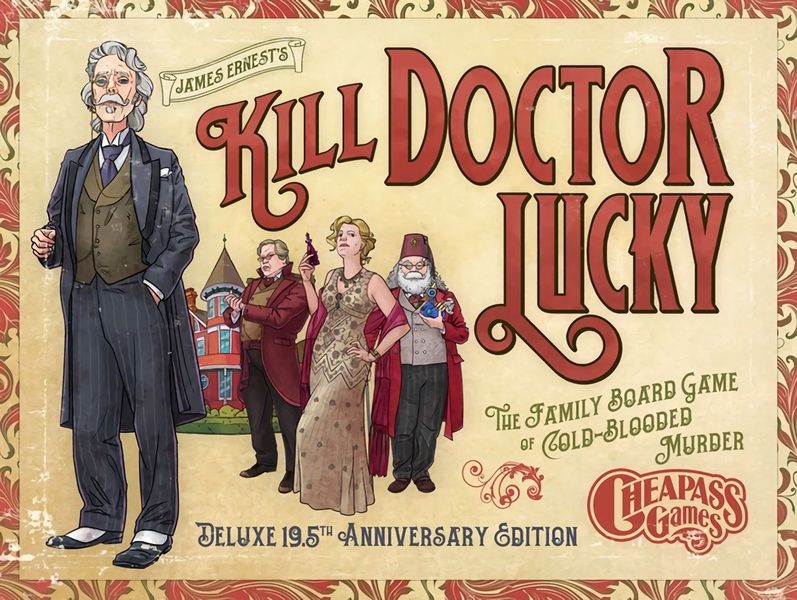
Here’s another post on ways to get ideas for game designs! I’ve written about this a few times before, but I’m always finding out new ways to start the game design process. If you haven’t read the previous articles, here they are:
Design for a Specific Company
One great way to start a game design is to design with a certain company in mind. This should give you some restrictions that should help with getting started really easily. You’ll want to do some research into the company and find out what kinds of games they usually publish. If you pick a company you’re less familiar with, this is also a terrific way to learn new mechanisms and themes!
Here are some different aspects to consider when looking at a company’s games:
- Do they stick to one main size of game or do they do a variety of sizes?
- Do they have a consistent type of player interaction? For example, Smirk & Dagger tends to have games that have at least a bit of take that. Is there a general feel to the type of games that the publisher makes?
- What kinds of components do they use in their games? Some companies tend to use very generic components, while others specialize in having something different in each of their games, such as custom meeples, custom dice, etc. Some companies don’t like to use cubes, while other companies are perfectly fine making games with 50+ cubes or a ton of chipboard.
- Is there a certain type of theme that the publisher likes? If not, what are a few of the company’s themes, and how could you mix them together to create a new, yet similar theme? For example, Runaway Parade Games has Fire Tower and a game about birds, so joining those two themes gets you phoenixes.
- What kind of game isn’t in their lineup yet? If a company makes a wide variety of games or themes, what sort of game don’t they have yet?
Make your list of requirements, then get started designing! With just enough restrictions, you’ll be able to quickly narrow down what you don’t want to do so you can focus on what the game could be. If you do get inspired, you also have a good starting place on where to pitch the game!
You may also simply want to reach out to a publisher and ask them what kinds of games they’re looking for. Some companies can be pretty specific about what they want, which could be a great place for you to start!
Design the Sequel, Prequel, or Next in Series
This is taking the idea of Title First game design a little farther. With that type of design, you come up with the title and think about what kind of game would fit that title. When you’re trying to design the next game in a series, you want something similar in title and theme.
I designed a whole series of games, just thinking about what kind of game would go along with my game Way Too Many Cats. I started talking with friends and just throwing titles out there and these were just some of the titles that came up:
- Not Enough Dragons
- All the Dinosaurs
- Just Enough Dogs
- Exactly One Rabbit
- Some Ducks
Not only did I have titles for my future games, but it also made me want the games to feel like they were in a series together, hence similar mechanisms. With games in series, I recommend having similar feels to the games, but different actions or ways to interact or something that sets each game apart from the previous ones. Basically, something that is similar, but different.
Another example of this is thinking less about the title and more about the time period of the game. What happened to create the setting of the current game? What happens after the game ends? One classic example of this is Kill Doctor Lucky, which is the inverse of Clue. In the game, you’re trying to kill Dr. Lucky with a weapon in a location without getting caught, instead of trying to figure out who committed the murder, what weapon they used, and where they did it.

Hate-Designing
While this isn’t the most positive type of designing (as you may have guessed), it can certainly be effective! Find a game you don’t like, either because of theme, gameplay, or anything else. Then, make something that takes parts of that game and make something you love. If you hate a certain theme, like farming, make a farming game you would like! Instead of farming regular corn or wheat, maybe it could be farming weird space crops. Heck, Ooblets (a video game) lets you grow cute creatures from seeds and then harvest them!
I haven’t found a game with “I split, you choose” that I enjoy, so I’ve tried starting a number of designs with that mechanism. Granted, none of the designs have actually KEPT that mechanism, but it’s been motivating enough for me to get the prototype made and playtested.
Some people are best motivated by what they’re passionate about… and sometimes you’re passionate about making something that’s a way better fit for you than what’s currently out there.
One kind of hate designing that I wouldn’t entirely recommend is trying to design something that will aggravate your regular codesigner, as they might have hit their limit of dealing with your bird-themed spatial puzzle games, *ahem*, and you might just need to find a new codesigner. Believe it or not, this is a lot of work, especially as there’s a finite number of people that are passionate about only making bird games.
Did you enjoy this entry? What are some ways that you get yourself inspired to design? Please let me know! I’d love to hear what you think and what kind of things you’d like to see from this blog. Feel free to send me an email or comment with your thoughts!
Don’t forget to sign up for my mailing list, so you don’t miss a post: https://tinyletter.com/carlakopp
Thanks for the article! Great advice!